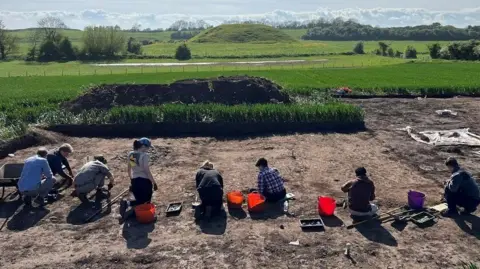'Rare and significant' finds in early medieval dig
 University of York
University of YorkArchaeologists excavating an early medieval site on the East Yorkshire coast said they have found buildings and objects of "national significance".
The team from the University of York began work uncovering the remains of a timber hall close to Skipsea, and have now found evidence of an even earlier settlement.
Dr Jim Leary, from the University's Department of Archaeology, said only a "handful" of such sites existed in the UK and the discovery of buildings and tools that could date back as far as the 5th or 6th Centuries was "phenomenal".
The team are expected to be on site until the end of May.
 University of York
University of YorkArchaeologists have now found objects related to industry at the site, including tools for metalworking and smelting, and spindles linked to the production of textiles.
The period between the Romans leaving the UK and the arrival of the Vikings has historically been known as the Dark Ages, as limited documents exist from this time.
Dr Leary said it was "very rare" to find artefacts from this period, so the discovery of this site in Skipsea could be "hugely significant."
He said the team, which includes a number of trainee archaeologists on their first dig, were buoyed by the finds.
"We're all very happy on site, we're walking round with the biggest smiles on our faces," he added.
More to find
The team expect to find even more items of interest until the dig finishes at the end of May.
After this, all artefacts and samples will be examined at the University's laboratory to find out more about them, including carbon dating.
Dr Leary said the discovery at Skipsea is "particularly interesting" because the area was controlled by the last Anglo-Saxon King of England, Harald Godwinson, and after the Norman Conquest of 1066, became the estate centre of the Lords of Holderness.
The dig is close to the site of Skipsea Castle, an Iron Age fort also of archaeological interest.